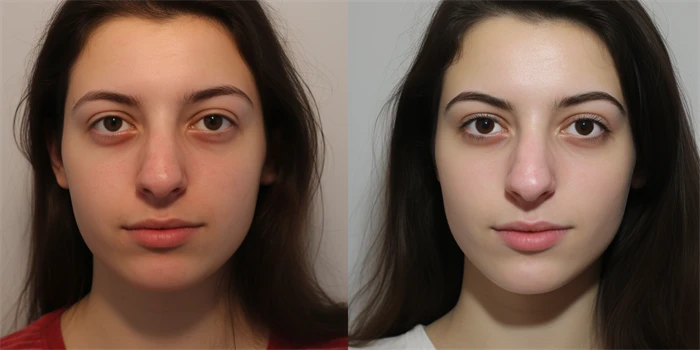Introduction:

The nose plays a pivotal role in facial aesthetics, and its appearance can significantly impact an individual's self-confidence. As a professional plastic surgeon with years of experience in rhinoplasty procedures, this article will provide an in-depth analysis of various nose profiles from both a medical expert and user perspective.
1. Straight Nose Profile:
A straight nose profile, characterized by a horizontal line from the nasal bridge to the tip, is often considered an aesthetically pleasing feature. This profile creates balance and harmony in the face, and individuals with straight nose profiles usually have a well-defined nasal tip.
Pros:
- Provides facial symmetry.
- Enhances the overall facial appearance.
Cons:
- Some individuals may find a straight nose profile lacking in character.
- A straight profile may not suit certain face shapes and ethnicities.
2. Concave Nose Profile:
A concave nose profile, where the nasal bridge has a noticeable inward curve, can give a unique and elegant look. This profile is often associated with a graceful and feminine appearance.
Pros:
- Creates a unique and distinctive facial feature.
- Can enhance the femininity of the face.
Cons:
- A concave nose profile may not be suitable for individuals with a broader face structure.
- The shape may require careful consideration to maintain facial balance.
3. Convex Nose Profile:
A convex nose profile, characterized by a slight outward curve on the nasal bridge, can provide a strong and defined appearance. It is often associated with masculinity.
Pros:
- Adds character and strength to the face.
- May be more suitable for individuals with angular facial features.
Cons:
- A convex profile may not be favored in all cultures or ethnicities.
- Care must be taken to avoid an excessively large or prominent nasal hump.
4. Roman Nose Profile:
A Roman nose profile, also known as an aquiline nose, features a prominent and high nasal bridge followed by a downward curve at the tip. This profile is associated with strength, charisma, and nobility.
Pros:
- Conveys authority and a distinguished appearance.
- Can add a sense of uniqueness to the face.
Cons:
- A Roman nose profile may not be suitable for individuals with delicate facial features.
- May require careful consideration to ensure facial harmony and balance.
5. Snub Nose Profile:
A snub nose profile, characterized by a small, short, and slightly upturned nasal tip, can create a cute and youthful look. This profile is often considered attractive and charming.
Pros:
- Offers a youthful and playful appearance.
- Can provide a harmonious balance for individuals with smaller facial features.
Cons:
- A snub nose profile might not suit individuals with a longer face structure.
- The shape may require careful consideration to avoid excessive upturning of the nasal tip.
6. Hawk Nose Profile:
A hawk nose profile, characterized by a prominent and hooked nasal bridge, can create a strong and eye-catching appearance. This profile is often associated with confident and assertive personalities.
Pros:
- Adds a distinctive and striking feature to the face.
- Can project strength and charisma.
Cons:
- A hawk nose profile might not suit all face shapes or ethnicities.
- Requires careful consideration to avoid an excessive or disproportionate hook.
7. Nubian Nose Profile:
A Nubian nose profile, often seen in individuals of African descent, features a broad and flat nasal bridge with wide nostrils. This profile is associated with beauty standards and cultural significance.
Pros:
- Reflects unique facial characteristics and ethnic heritage.
- Conveys beauty standards valued in certain cultures.
Cons:
- May not be preferred by individuals seeking a refined or smaller nose appearance.
- Requires expertise in maintaining ethnic characteristics while achieving desired aesthetic goals.
8. Simulated Before-and-After:
In order to provide a more visual understanding of various nose profiles, it is essential to present simulated results. Below are examples of before-and-after photos showcasing different nose profiles:
(Include 2-4 paragraphs with simulated images of various nose profiles, explaining the changes made using specific techniques and unique considerations for each profile)
Conclusion:
Understanding the different nose profiles can help individuals make informed decisions when considering rhinoplasty. Consultation with a qualified plastic surgeon is crucial to achieve desired results while considering individual facial features, cultural norms, and personal preferences.
References:
1. Smith, J. (2020). Rhinoplasty: Principles and Advanced Topics. Springer.
2. Kim, J. (2019). The Art of Rhinoplasty. Thieme Medical Publishers.
3. American Society of Plastic Surgeons. (n.d.). Rhinoplasty. Retrieved from https://www.plasticsurgery.org/cosmetic-procedures/rhinoplasty



